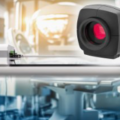~ The key considerations for using wireless telemetry systems in hazardous environments ~
In 2019 an accident at a Petrochemical plant in Texas caused the evacuation of 60,000 nearby residents. This event highlights the importance of taking every necessary precaution to prevent accidents in hazardous working environments. Here, Matthew Youngs, sales and marketing manager at sensing and measurement specialist Mantracourt, discusses the key considerations of ATEX and IECEx certified electronics for use in hazardous applications.
The oil & gas industry and industrial processing industries create demanding and harsh industrial environments for electronics because of the volume of volatile chemicals.
Electronics like wireless transmitters face various challenges as a result. For example, if they are not sealed correctly, they can allow chemicals, combustible dust and other matter into the equipment. Not only can this interfere with the performance, but it can also create an environment where a spark could cause an explosion.
Therefore, they must be specially designed for the application and rigorously tested and approved if they are to be used in these hazardous applications.
Regulatory compliance
ATEX is a European single market directive that applies to electrical and mechanical equipment and protective systems. If equipment is being used in an area that is identified as potentially explosive, such as petrochemical plants, then it must be tested and certified to ATEX. There is also IECEx, which is an international certification relating to equipment for use in hazardous explosive atmospheres and is more commonly used outside of Europe.
ATEX zones are defined based on the likelihood and duration of the presence of a potentially explosive atmosphere in a particular area. There are three zones: Zone 0, Zone 1, and Zone 2.
Zone 0 is an area in which an explosive atmosphere is present continuously, or for long periods of time, or frequently. Zone 1 is an area in which an explosive atmosphere is likely to occur in normal operation and Zone 2 defines an area in which an explosive atmosphere is not likely to occur in normal operation, but if it does occur, it will only be for a short time.
ATEX and IECEx approval means that electronic products have been designed and manufactured to prevent the ignition of explosive atmospheres, significantly reducing the risk to the safety of personnel and equipment. It is a legal requirement for electronic products to have this approval when used in these zones.
Key considerations
Although ATEX certifications are a requirement for equipment that is to be used in these environments, there are other considerations to make when choosing the right wireless telemetry system for the job.
Instruments with long battery life can reduce the need for personnel to access hazardous or remote locations to replace or recharge batteries, improving their safety and reducing the risk of accidents.
Temperature fluctuations can cause changes in the electrical properties of the sensor or the instrument, resulting in variations in the output signal.
Electronics with low temperature drift help maintain stable and predictable electrical behaviour, reducing the risk of sudden temperature-related failures or malfunctions that could ignite the hazardous atmosphere. They also degrade at a slower rate in environments with variable temperatures, further enhancing their durability.
Mantracourt’s X24 range including its Telemetry Strain Transmitter Module and its Handheld Telemetry Display is approved for use in explosive atmospheres Zone 1 and Zone 2. These devices operate with strain bridge inputs and gather and transmit data from force, weight, torque and pressure sensors.
The Transmitter Module can transmit data to existing T24 receivers in the safe zone. This reduces the risk to personnel by allowing them to monitor their systems from a safe distance. The T24 wireless telemetry system can then link to a PC in the safe zone, where users can safely access SensorSpace, a cloud-based platform with a 24/7 live feed.
Find out how you can use Mantracourt’s X24 wireless telemetry system for your hazardous applications by visiting the company’s website.







